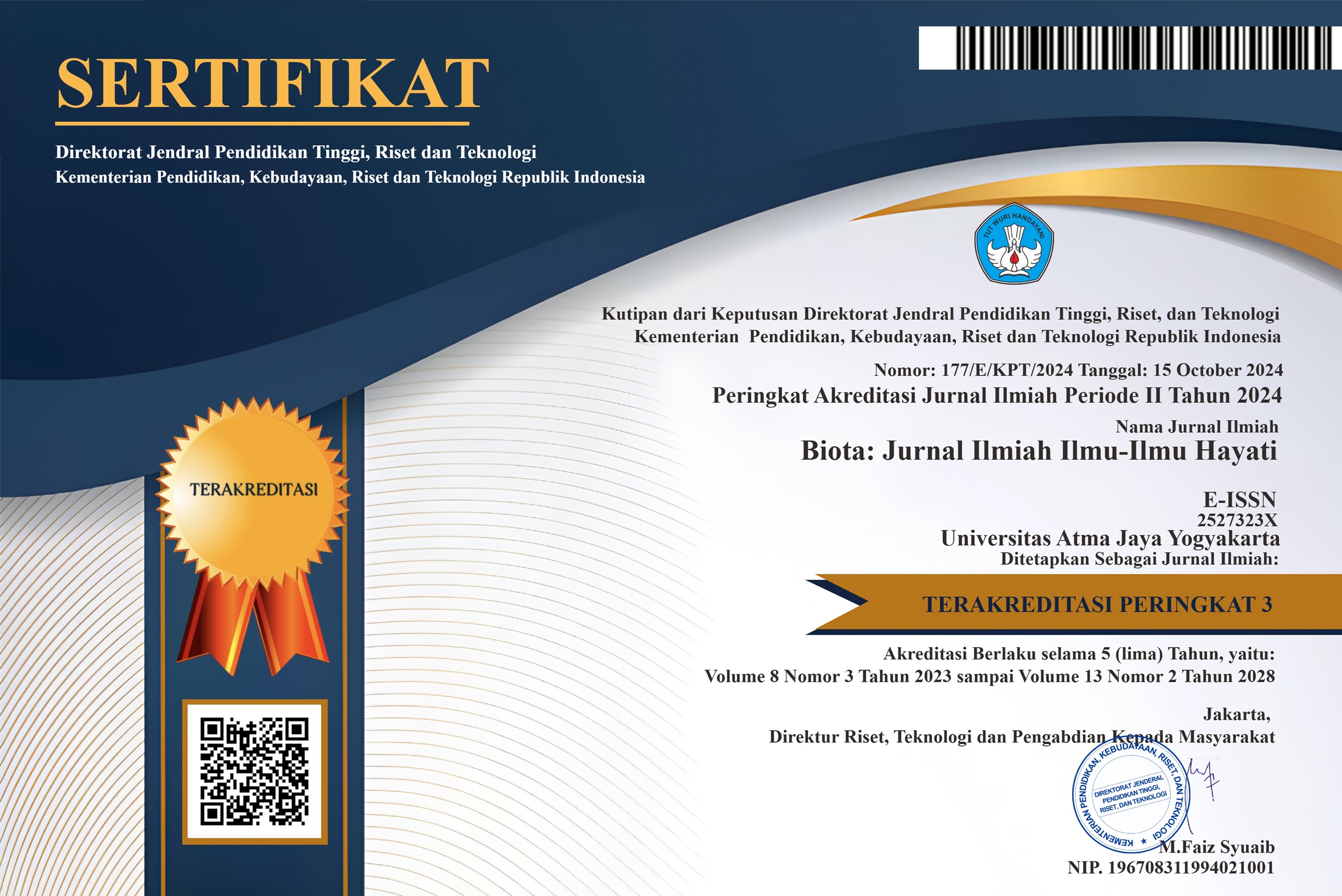Penggunaan Operkulum dalam Penentuan Umur pada Rhinoclavis sinensis Gmelin 1791 (Gastropoda: Cerithiidae)
DOI:
https://doi.org/10.24002/biota.v15i3.2601Keywords:
operculum, Rhinoclavis sinensis, age determination, Gastropoda, CerithiidaeAbstract
Age determination of the sample specimen is very important for population dynamic research of R. sinensis (Gastropoda : Cerithiidae). Operculum is a “hard” part stick on the dorsal portion of the foot of gastropods. Operculum appeared on the day of the snails are born and have their own specific shape, size, and materials composition. The aim of this research was to describe the use of operculum in age determination of R. sinensis. The method used in this research was: the operculums were soaked into saturated sodium hydroxide, washed and mounted them in Canada balsam, and observed using binocular microscope. Regression analysis was used to find the relationship between length of operculum to length of shell, and number of adventicious layers of operculum to length of shell. The research resulted that the length of operculum was comparable with the shell length, with the regression line of Y=0.113X +1.898 (R2=0.857). The growth of adventitious’ layers of the operculum coincided with the growth of the shell that in the second year, the growth of adventitious layers was two layers a year. At the age of three and four, the growth was one layer a year. During the fifth, sixth and seventh years, the growth was only a layer within three years. The regression line was Y=0.168X (R2=0.872).Downloads
Published
15-10-2019
How to Cite
Zahida, F., & Subagja, J. (2019). Penggunaan Operkulum dalam Penentuan Umur pada Rhinoclavis sinensis Gmelin 1791 (Gastropoda: Cerithiidae). Biota : Jurnal Ilmiah Ilmu-Ilmu Hayati, 15(3), 435–440. https://doi.org/10.24002/biota.v15i3.2601
Issue
Section
Articles
License
Authors who publish with Biota : Jurnal Ilmiah Ilmu-Ilmu Hayati agree to the following terms:
- Authors retain copyright and grant the Biota : Jurnal Ilmiah Ilmu-Ilmu Hayati right of first publication. Licensed under a Creative Commons Attribution-NonCommercial 4.0 International License that allows others to share the work with an acknowledgment of the work's authorship and initial publication in this journal.
- Authors are able to enter into separate, additional contractual arrangements for the non-exclusive distribution of the journal's published version of the work (e.g., post it to an institutional repository or publish it in a book), with an acknowledgment of its initial publication in Biota : Jurnal Ilmiah Ilmu-Ilmu Hayati, and as long as Author is not used for commercial purposes.












